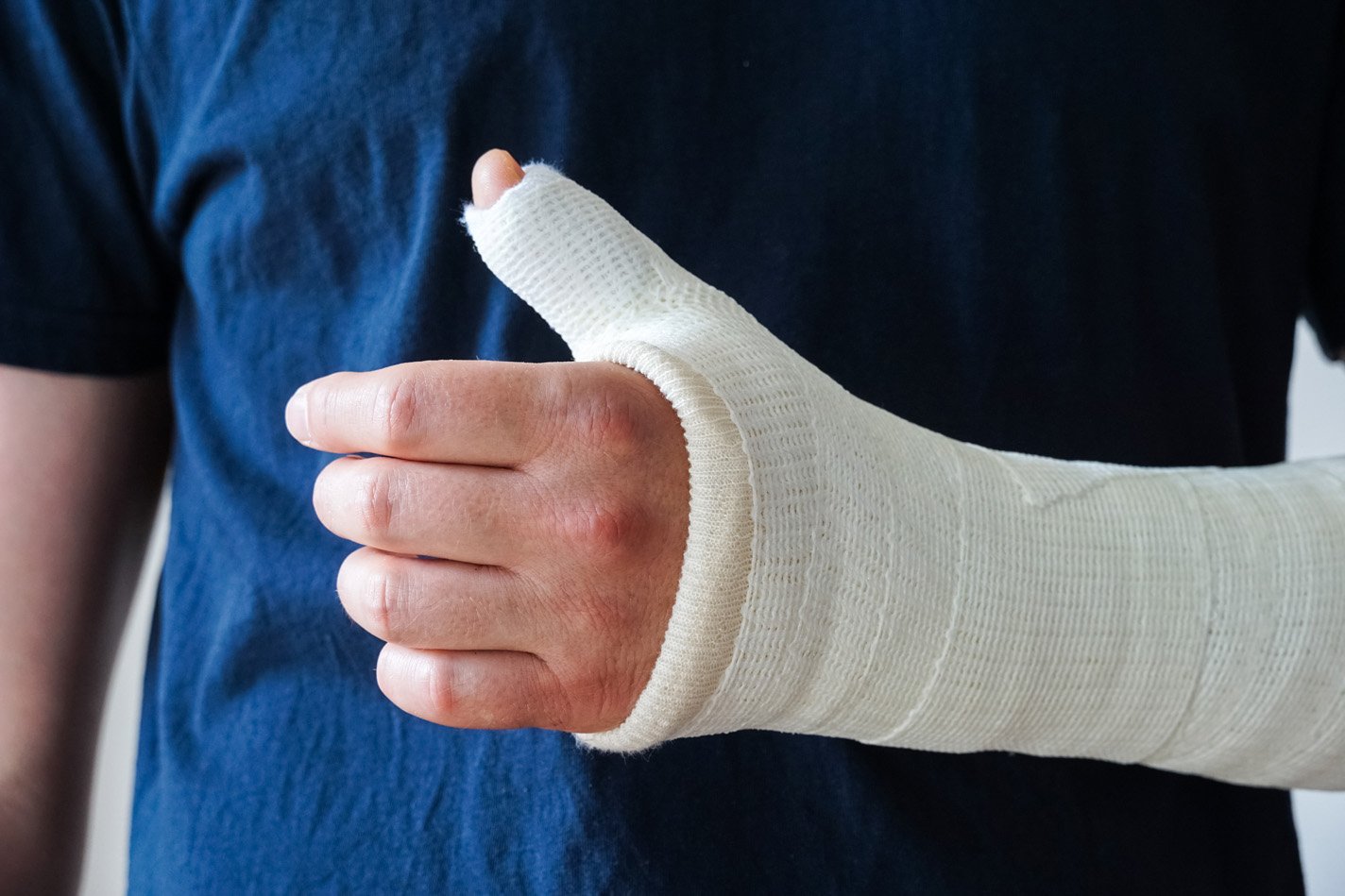Scaphoid Fracture
The scaphoid is a small wrist bone at the base of the thumb that can be fractured (broken or cracked) due to wrist trauma. Scaphoid fractures are often dismissed as wrist sprains by patients, and occasionally can even be missed by physicians since they can be difficult to detect on X-ray.

Causes
Most causes of a fractured scaphoid involve trauma to the wrist, such as:
- Fall onto an outstretched wrist (most common)
- Blunt force trauma (vehicle accident, direct blow to the wrist, work injury)
Signs and symptoms
Symptoms of a scaphoid fracture usually include one or more of the following:
- Wrist pain and tenderness to touch (especially on thumb side of wrist)
- Wrist swelling
- Wrist bruising
- Wrist pain / grinding with movement
- Wrist deformity (usually mild with acute fractures
Is there a test for scaphoid fractures?
Yes! Often fractures are obvious on physical examination, but severe sprains and contusions can also look and feel very much like a wrist fracture. X-rays usually show the fracture, but occasionally we need an MRI or CT scan for definitive diagnosis.
Scaphoid Fracture treatment
Suspected wrist fractures warrant emergent treatment if you are experiencing hand numbness and tingling, severe or “tight” swelling, significant deformity of the wrist, or any open wounds around the wrist (possible open or compound fracture). Even without these warning signs, it is best to seek urgent treatment as the results of delayed treatment of scaphoid fractures often leads to undesirable outcomes such as nonunion (won’t heal) or malunion (heals crooked).
Nonoperative treatment:
Splinting and casting are the mainstays of nonoperative treatment of scaphoid fractures that are stable and not badly displaced (out of alignment). Scaphoid fractures are typically not able to be “set” straight without surgery. Cast treatment usually lasts 6-8 weeks as these are slow-healing fractures.

Operative treatment:
Surgical repair of scaphoid fractures is often required when the fracture pieces are unstable (won’t stay in place), or not healing properly with cast treatment. We perform a regional block to numb the arm and then make a small incision at the wrist to restore the alignment of the broken scaphoid and hold the pieces in place with an internal metal screw. Even with operative treatment, there is a risk of nonunion (won’t heal) or malunion (heals crooked).
Ready to confirm a diagnosis and fix the problem, or just want to learn more?
Our board-certified orthopedic hand and wrist surgeons, Eric Angermeier, MD and Kyle Kokko, MD, PhD, are here to help! They can often diagnose the problem in one visit, and get you started with a treatment plan. We offer a wide variety of both nonoperative and operative treatment options.
Call today for a clinic or telehealth appointment! 854-429-4263